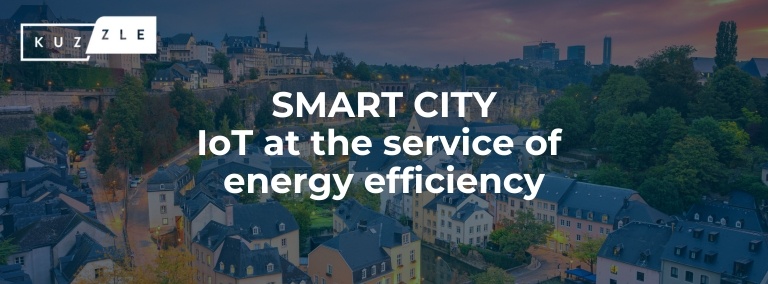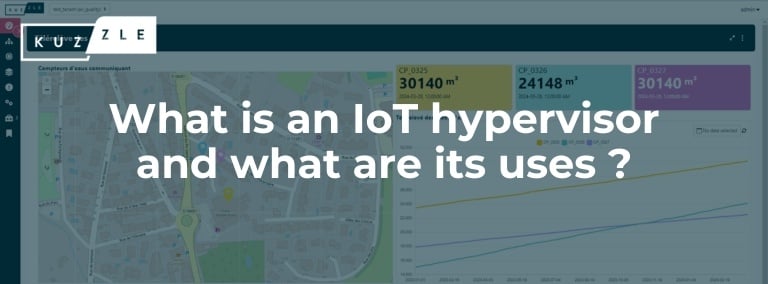Choosing the right IoT platform for your specific needs is crucial to the success of your projects. However, given the diversity and complexity of the solutions available, how can you be sure you're making the right decision? The answer lies in the systematic creation of a specification.
This document, far from being a mere formality, is an essential tool for clarifying your expectations, defining your requirements, and communicating effectively with your service providers. In this article, we'll take you through the essential steps involved in drawing up your specifications, so that you can choose the IoT platform that best meets your strategic, technical, and operational challenges. Follow our advice to lay the solid foundations of your IoT project!
In summary :
- Objectives and challenges of a specification for IoT platforms
- The key components of an IoT specification
What is an IoT platform?
IoT platforms make your connected objects smarter by implementing sensors that transmit data directly into your IoT ecosystem. These IoT solutions improve operational efficiency and support rapid, informed decision-making. With intuitive user interfaces and real-time analytics, they provide a detailed view of your operations, converting large volumes of data into actionable information. Whether in city management, logistics, manufacturing, or healthcare, they play a key role in digitalizing and innovating your business.
To find out more, read our full article on IoT platforms
Objectives and challenges of a specification for IoT platforms
Drawing up a specification for the adoption of an IoT platform is a strategic approach that requires particular attention. It requires an in-depth understanding of the issues surrounding IoT technology, as well as anticipating future challenges. By addressing these issues at the design stage, companies can maximize the benefits of their IoT initiatives, while minimizing the associated risks and costs.
The specifications serve as a reference throughout the project lifecycle, from design to deployment of the IoT platform.
There are many issues involved in the specifications for IoT projects, and they are crucial to the success of an IoT project. They cover strategic, technical, and operational aspects.
Here are the main objectives that a specification must meet:
- Precise project definition: This clarifies the vision of the IoT project and the objectives to be achieved, ensuring that all stakeholders share the same understanding.
- Frame of reference: This serves as a reference document for all parties involved, including development teams, suppliers, and partners, by clearly defining expectations and requirements.
- Supplier selection: The specification facilitates the tendering and selection process for suppliers or service providers by providing a framework for evaluating their proposals.
- Project management tool: It helps to plan, organize, and supervise the project by defining the key stages, deliverables, deadlines, and success criteria.
- Technical quality: By establishing quality standards and technical specifications, the specification ensures that the final product meets expectations in terms of performance, reliability, and compliance.
- Risk management: It identifies the potential obstacles and challenges facing the project, enabling it to anticipate and respond to the risks identified.
- Budgetary framework: By defining the estimated costs and funding model for the project, the specification contributes to financial planning and resource management.
- Coordination and communication: It facilitates communication and coordination between the different teams, thus avoiding misunderstandings.
- Flexibility and adaptation: Although it defines a strict framework, a good specification encourages flexibility to adapt to unforeseen events or new opportunities that may arise during the IoT project.
In short, the specification is an essential tool that guides the IoT project from conception to completion, ensuring that the objectives are clearly defined, shared, and achieved effectively.
-Mar-25-2025-03-45-20-0286-PM.png?width=920&height=460&name=Design%20sans%20titre%20(1)-Mar-25-2025-03-45-20-0286-PM.png)
The key components of an IoT specification
Drawing up specifications for the development of an IoT platform is a crucial stage in the success of your project. By highlighting the definition of the need, the technical requirements, the performance criteria, as well as integration and compatibility, a precise and functional specification will be the key to your success. These elements form the foundation on which the selection of your IoT platform is based, ensuring that the chosen solution perfectly meets your objectives, the context of use, and the needs of end users and integrates perfectly with your existing technological ecosystem.
Find out how to create your specifications easily to choose your IoT platform:
1. Defining the need
The first step in creating a specification for an IoT platform is to clearly and precisely define the need. This involves identifying the specific objectives of the project, understanding the context of use, and determining who the end users will be. It is crucial to define the expected functionalities and use cases of the IoT platform to ensure that it will meet the project's requirements. This step lays the foundations for a successful IoT project by aligning the expectations of each party and providing a clear direction for all phases of project implementation.
2. Technical requirements
Technical requirements are essential in the specification for an IoT platform, including:
- Interoperability: Requires compatibility with the network connectivity and sensor technologies used. Interoperability is crucial to the efficient operation of the IoT platform.
- Data security: A major technical pillar for the platform, it is the answer to data protection, confidentiality and regulatory compliance (e.g. RGPD).
- Scalability: The ability of the platform to adapt to an increase in the number of users and connected devices, a critical aspect in supporting the growth and expansion of the project.
- Reliability and availability: Importance of Fondamental for continuity of operations and user satisfaction, and ensuring uninterrupted, reliable service.
3. Performance criteria
Performance criteria define the expectations in terms of the operational capacity of your IoT platform. This includes real-time management, minimal latency, and the ability to efficiently process data coming back from connected devices.
Support and maintenance are also crucial, with clearly defined terms and conditions and service level agreements (SLAs) that guarantee a rapid and effective response to technical problems. These criteria are vital to ensure an optimal user experience and the continued smooth operation of the IoT platform.
4. Integration and compatibility
Integration and compatibility are essential for an IoT platform, which must operate coherently and seamlessly within a wider technology ecosystem. This means that the IoT platform must be compatible with a wide range of IoT devices and protocols. Integration with existing information systems, such as ERP and CRM, is important to enable seamless data management. Pay particular attention to compatibility right from the design phase to ensure effective implementation and long-term operability.
Tips to remember
Drawing up a well-defined specification is crucial to the success of any IoT platform adoption. This document serves as a solid foundation on which the project is built, ensuring that all stakeholders have a clear and shared understanding of the objectives, requirements, and success criteria. It also facilitates communication between development teams, suppliers, and customers, reducing the risk of misunderstandings and increasing the chances of success.
Adopting a methodical and rigorous approach to planning and implementing IoT projects is essential. This means taking the time to accurately identify needs and expectations, define technical requirements exhaustively, and establish clear performance criteria. Such an approach not only ensures that the project is well aligned with the organization's strategic objectives, but also that it is technically feasible and economically viable.
Best practice also includes the flexibility and adaptability of the specifications in the face of change and technological advances. As the IoT field evolves rapidly, it is important that the specification can be adjusted to incorporate new technologies or meet emerging needs, without compromising the overall vision of the project.
In short, a well-defined specification is essential for successfully navigating the complexity of IoT projects. It guides teams through the various development phases, minimizes risks, and helps to deliver an IoT solution that meets user expectations and business objectives. So it's a must!
Do you want to set up an IoT project?






